Windows includes accessibility options to assist users who may have difficulty using their computers normally in getting a little more functionality out of their favorite operating system. Though how manage accessibility features in Windows 10 system innovates on many features we’ve come to expect from previous versions of the operating system, Microsoft has opted to keep much of the core functionality of its accessibility features the same to make it easier for both users and developers to transition smoothly between the old and new systems.
Nonetheless, here’s how to manage all of the accessibility features in Windows 10 settings’ most recent update.
For the blind or those with severe vision impairments, the Narrator is a vital tool that will read off the contents of any page, window, or application you click into piece by piece, while also reciting specific portions of those selections out loud.
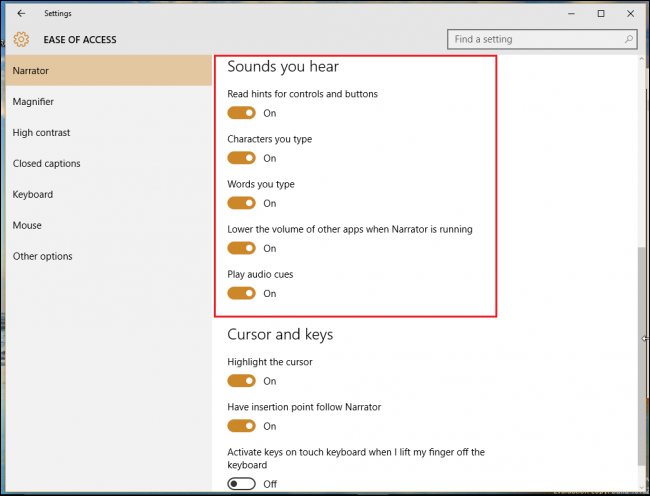
Many of the features introduced in Windows 7 have been carried over to Windows 10, such as reading off the characters you type as you type them, playing audio cues when you click into new pages or applications, and reading off hints for controls and buttons that will nudge sight-impaired users in the right direction based on carefully tuned prediction algorithms.
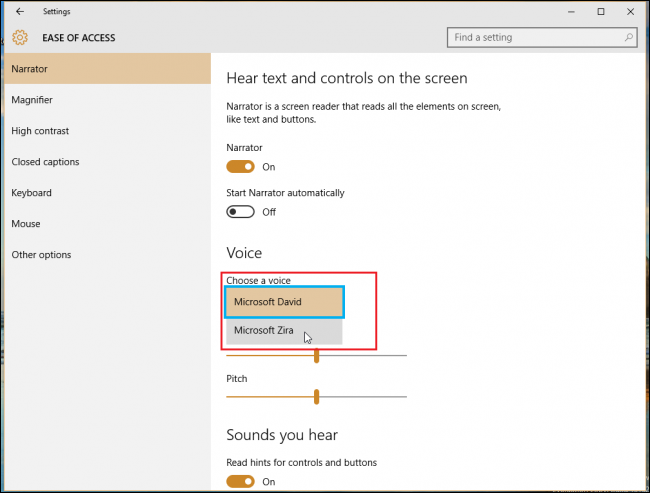
Magnifier is yet another of the Windows Ease of Access features designed to help anyone who has difficulty reading their screen or simply wants a tool to get a close up view of detail work in 3D modelling, Photoshop, or game design.
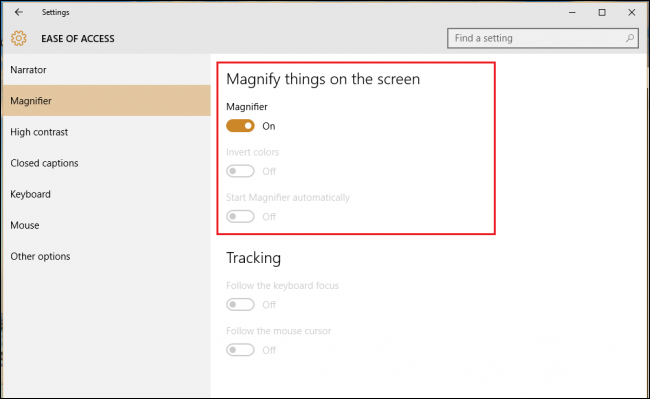
Turning the Magnifier on or off, inverting colours within the magnified area (again, designed with designers and digital painters in mind), and a toggle that will automatically start the Magnifier tool each time you log in to your account are all available here.
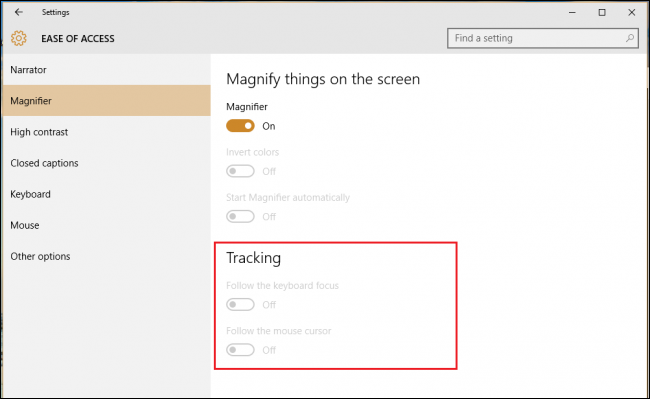
A new feature in Windows 10 allows you to specify what gets magnified. This can be changed to follow only the mouse, the keyboard selection, or both at the same time.
Keeping with the theme of “making things easier,” Microsoft has grouped all of its visual accessibility features into the top three options in the Ease of Access panel.
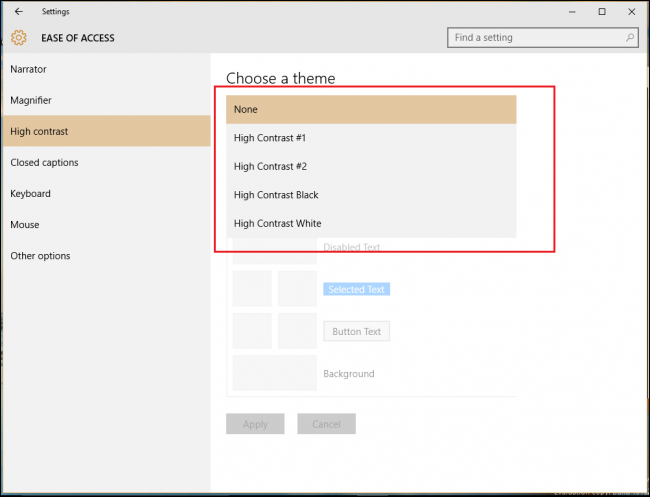
High contrast will drastically alter the overall color scheme, making text, images, application windows, and icons easier to read for those with colorblindness or who simply want to spice things up when the old layout becomes too easy on the eyes.
The closed captions section allows you to customize how any closed captions in your local media players appear during movie or TV show playback. For those who struggle to read white text against moving backgrounds in Windows Media Player, this option, which allows you to choose any color from the Windows color palette, can be a lifesaver.
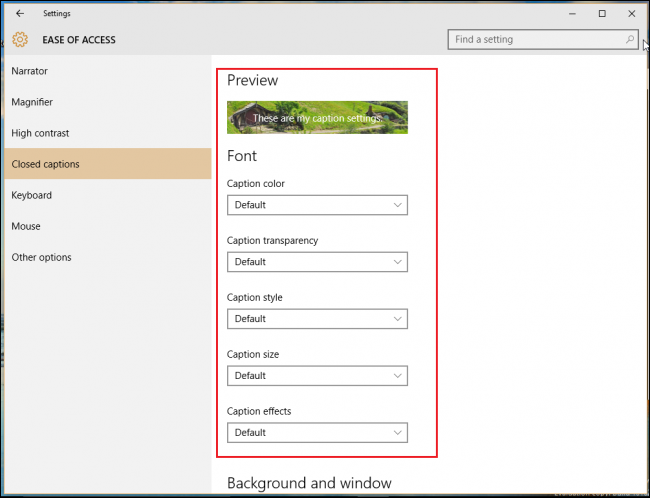
Ease of Access keyboard options have always been one of Windows’ shining points, offering a wide range of customization that will help anyone with disabilities or special needs have exactly every time they boot up and log in, they get the PC experience they want.
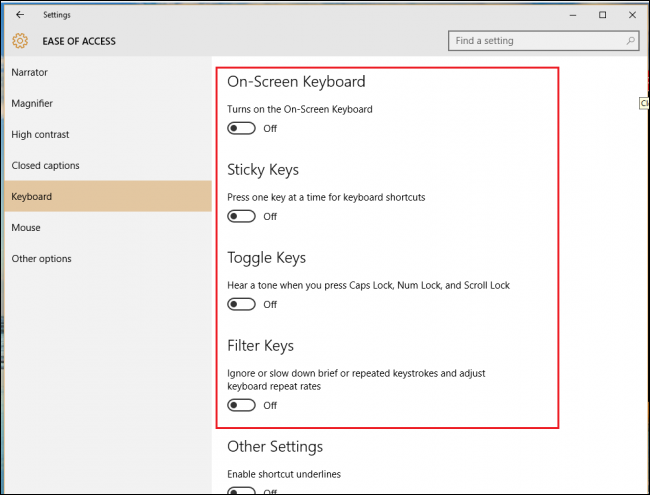
An On-Screen Keyboard is a useful tool for anyone who is using Windows 10 on their Surface tablet or simply wants to type a few words without having to pull out the Bluetooth keyboard. Sticky Keys modifies your keyboard to treat any strikes of the control, shift, or alt keys as a hold command rather than a tap. This is ideal for anyone who has difficulty maintaining finger dexterity for extended periods of time (arthritic patients, for example), or for users who are too lazy to hold down more than a few keys at once.
Toggle Keys will help to solve the annoying problem of not knowing whether or not Caps Lock has been activated by playing a tone whenever, the Num Lock, or Scroll Lock keys are pressed. Great for people with low vision or sausage fingers like mine who accidentally hit it while trying to enter their password on the main screen.
Sticky Keys can also be activated anywhere in Windows by rapidly pressing the shift key five times in a row.
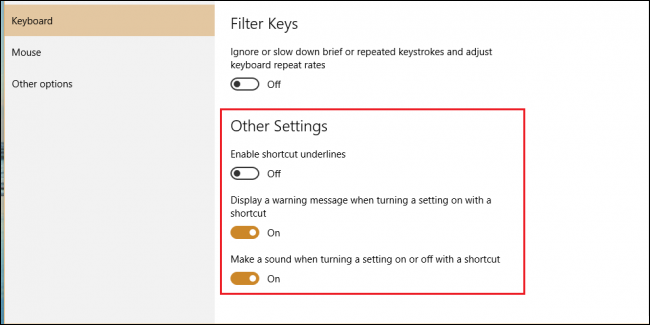
Filter Keys are designed for anyone who has trouble managing their hands on the keyboard or needs a system that monitors for faulty keyboard commands struck too many times in a short period. They will keep an eye out for repeated keystrokes and minimize your need to go back over what you’ve written with the backspace key.
options for moving the mouse are limited, but if you have trouble seeing the cursor and need to enlarge it for better visibility, this is the place to do it.
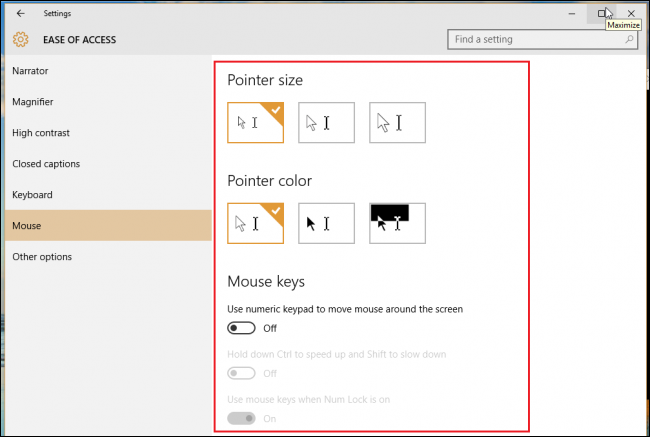
After reviewing the Accessibility features in Windows 10, you can enable the features that you believe are necessary for your PC. These accessibility features are really cool because they allow you to create custom screens, hardware, and settings.